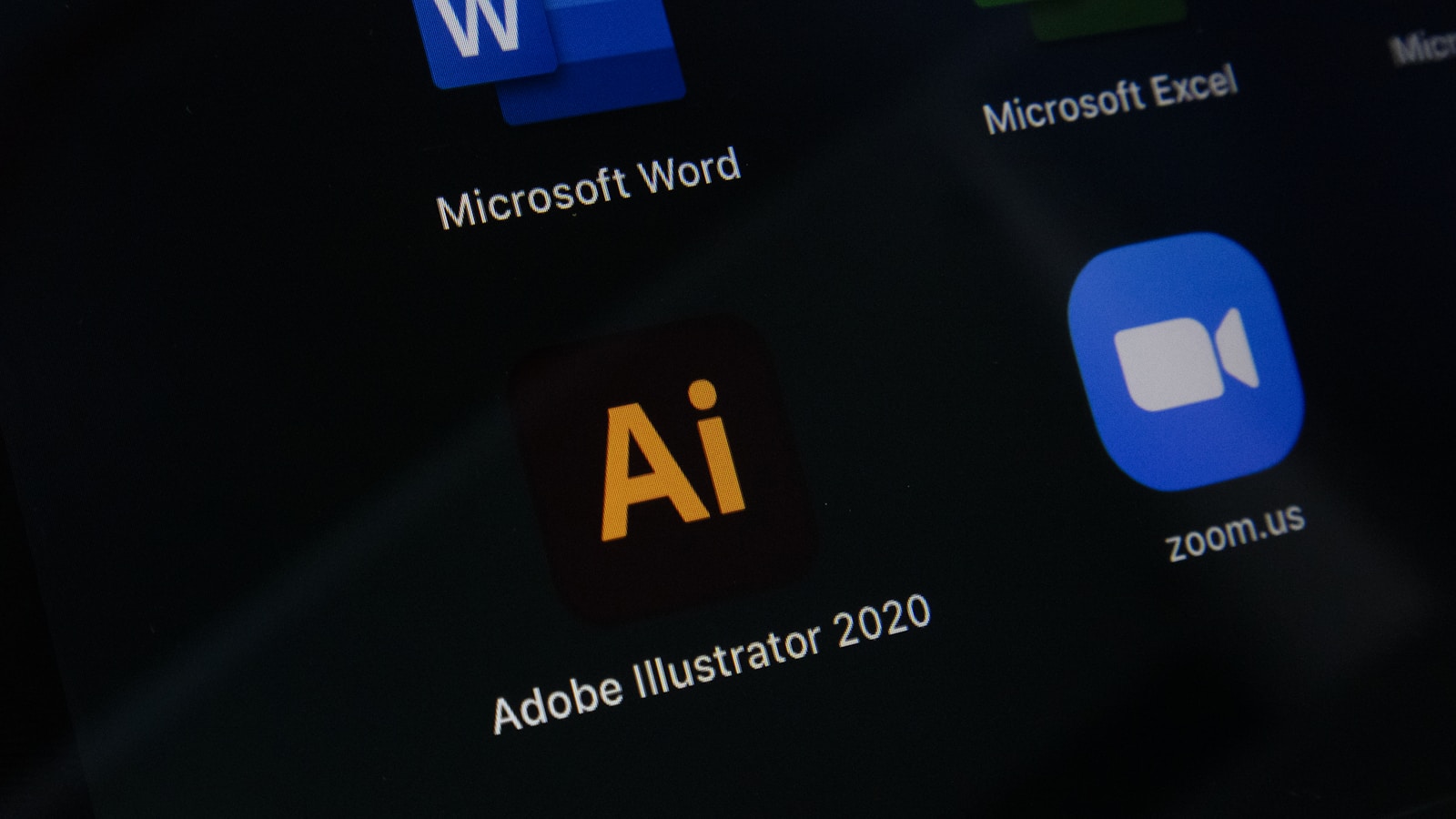Adobe Illustrator is a powerhouse, but it’s not the only way to create crisp vectors, scalable logos, and web-ready SVGs. Whether we’re cutting costs, going open-source, or building a cloud-first workflow, there are excellent free alternatives to Adobe Illustrator that can cover most professional needs. Below, we’ll break down what actually matters in a vector tool, our top free picks, practical switching tips, and how to choose the right app for logos, UI/UX, and web graphics.
What to Look For in a Free Illustrator Alternative
Before we jump in, let’s define the must-haves so we don’t swap a premium pain point for a free one.
- Core vector tools: Precise Pen/Bezier curves, shape tools, boolean operations, pathfinder, and reliable node editing. If those feel clumsy, everything takes longer.
- Type handling: Good font rendering, kerning/leading controls, and support for OpenType features. Variable fonts and text-on-path are a bonus.
- Multi-page/artboards: Real-world projects span multiple sizes and orientations. Multi-page or artboard support keeps branding work organized.
- File formats: Clean SVG and PDF export is essential. EPS import/export is helpful for legacy files. Illustrator compatibility is a nice-to-have, not a guarantee.
- Color management: At minimum, solid sRGB workflows. True CMYK and spot colors are still rare in free tools, plan around that for print.
- Collaboration and libraries: Components, shared styles, and real-time editing matter for teams. Plugin ecosystems or extensions can fill gaps.
- Performance and stability: Vector work often involves complex paths. The app should handle large files without choking.
If a free Illustrator alternative checks most of these boxes, we’re in good shape.
The Best Free Illustrator Alternatives
Inkscape (Windows, macOS, Linux)
Inkscape is the go-to open-source vector editor and, for many of us, the closest free Illustrator alternative for pure vector drawing. It handles precise Bezier curves, robust path operations, text-on-path, symbols, and even mesh gradients. Recent releases added multiple pages, better performance, and more polished UI touches. SVG is its native format, with strong PDF export: CMYK remains a workaround via PDF, but for web and general brand work, it’s more than capable. Bonus: a huge community, extensions, and zero cost.
Figma (Web and Desktop)
Figma isn’t a print tool, but for UI, icons, and collaborative vector work, it’s fantastic, and free for individuals/small teams on the Starter plan. It shines with components, variants, Auto Layout, and real-time multiplayer editing. Exports to PNG, JPG, SVG, and PDF are straightforward. If your vector work leans digital, Figma can replace a ton of Illustrator tasks while adding cloud collaboration we didn’t know we needed. Offline is limited, and CMYK isn’t the point here, but it’s a design team’s workhorse.
Penpot (Open-Source, Web)
Penpot is an open-source, web-based alternative built around open standards (SVG at its core). Think of it as a Figma-like environment without vendor lock-in, great for organizations that value transparency and self-hosting options. It supports components, shared libraries, grids, and prototyping, plus team-friendly collaboration. The vector tools are solid and improving quickly. While not print-focused, Penpot is a smart pick for digital product teams who want free and open-source with real momentum behind it.
Gravit Designer/Corel Vector (Free Tier)
Corel Vector (formerly Gravit Designer) runs in the browser and as a desktop app. The free tier gives us intuitive vector drawing, multi-page documents, symbols, and handy export presets (SVG, PDF, PNG). It’s approachable for beginners but deep enough for brand and marketing assets. The Pro version unlocks advanced features, but the free tier covers a surprising amount, especially for social graphics, pitch decks, and lightweight brand systems. If you like modern UI and portability, it’s worth a look.
Vectr (Web and Desktop)
Vectr is a lean, beginner-friendly vector editor that’s truly free. It’s great for quick icons, simple logos, and web graphics without a learning curve. Collaboration and cloud saving are built in, and exporting SVG/PNG is easy. We wouldn’t pick it for complex identity systems or heavy path editing, it’s not trying to be Illustrator, but for fast, low-friction vector tasks, Vectr gets the job done with minimal fuss.
Boxy SVG (Browser and Desktop)
Boxy SVG focuses squarely on SVG creation for the web. The interface is clean, path editing is precise, and the exported SVG is notably lean, ideal for front-end performance. It integrates nicely with web fonts and CSS-minded workflows. Note: Boxy SVG isn’t fully free long-term in all contexts (there’s a trial and low-cost license), but it’s so good for SVG that many of us treat it as a near-free option when budgets are tight. If you ship icons or inline SVGs, this tool pays for itself quickly.
Switching From Illustrator: Workflow Tips
Moving our muscle memory is the hardest part, not the files. A few tips to make the jump smoother:
- Start with SVG and PDF: Use SVG for web assets and PDF for handoffs/print proofs. Test round-trips to avoid surprises (e.g., strokes, text-on-path).
- Map shortcuts: Inkscape and others let us customize hotkeys. Mirror Illustrator’s most-used commands (Pen, Direct Select, Group, Align) to keep flow.
- Normalize color: Work in sRGB unless you’re print-bound. For print, export PDF and confirm color with your printer: avoid relying on spot libraries.
- Manage fonts smartly: Keep a project font folder, embed where possible, and outline text only for final print handoff to preserve editability.
- Rebuild your library: Recreate core components, logos, grids, color styles, once in your new tool, then reuse. It’s an upfront time cost that pays back fast.
Which Tool Should You Choose?
Logos and Brand Systems
If we’re crafting logos, lockups, and brand guidelines, Inkscape is our best truly free Illustrator alternative. It’s precise, stable, and handles complex paths well. Corel Vector’s free tier is a close second for multi-page brand docs and quick exports. For SVG-focused icon sets, Boxy SVG is outstanding (even with its licensing caveat). Avoid collaboration-first tools here unless your brand work is mostly digital and you don’t need print-specific controls.
UI/UX Design and Collaboration
Figma leads for UI/UX. Components, variants, Auto Layout, and real-time collaboration keep teams in sync from wireframe to dev handoff. Penpot is our open-source pick, good for privacy-focused teams or those who prefer self-hosting and open formats. Inkscape can make pixel-perfect icons for your design system, then import to Figma or Penpot: that combo works well.
Web Graphics and SVG Workflows
For web icons, illustrations, and inline SVGs, we want tools that export clean markup. Boxy SVG excels at tidy SVG output and path-level control. Inkscape is powerful too, just use “Optimized SVG” export or an SVG optimizer to trim metadata. Penpot’s SVG-native foundation makes it great for teams handing assets to developers. Keep an eye on file size and viewBox settings for responsive layouts.
Limitations to Consider With Free Tools
We should be realistic: free alternatives to Adobe Illustrator aren’t 1:1 replacements for every print or enterprise workflow.
- CMYK and spot colors: True CMYK document modes and Pantone libraries are limited or absent. For print-critical work, validate with your printer via PDF proofs.
- Advanced effects: Some Illustrator-specific features (Blend tool nuances, Appearance panel tricks, Shape Builder ergonomics) may require workarounds.
- Plugin ecosystems: While growing, they’re generally smaller. Expect to rethink a few favorite plugins.
- Performance: Very large, complex artboards can lag in browser-based tools. Desktop apps like Inkscape usually handle heavier files better.
- Compatibility: Opening .ai files isn’t guaranteed. Prefer SVG/PDF interchange and plan for occasional cleanup.
Conclusion
There’s no single “best” free Illustrator alternative, but there is a best fit for our workflow. If we design identities and illustrations, Inkscape should be on our dock. If we live in UI/UX, Figma (or Penpot for open-source teams) will feel like home. For web-first SVGs, Boxy SVG is a joy. Pick one primary tool, pair it with a secondary for edge cases, and we can comfortably ditch the subscription without downgrading our craft.


